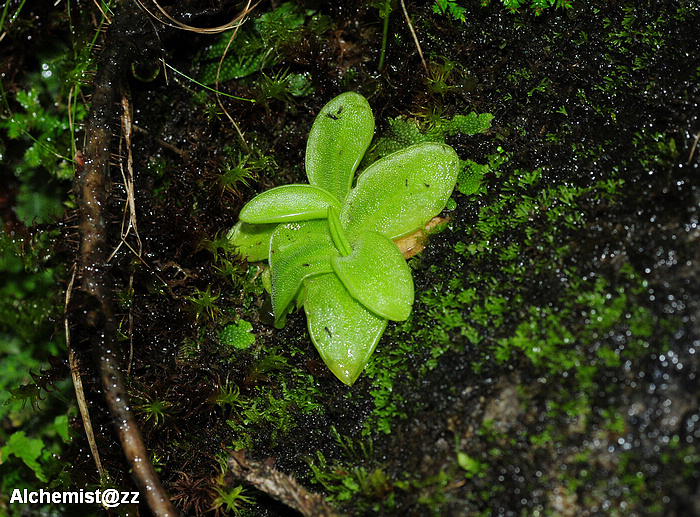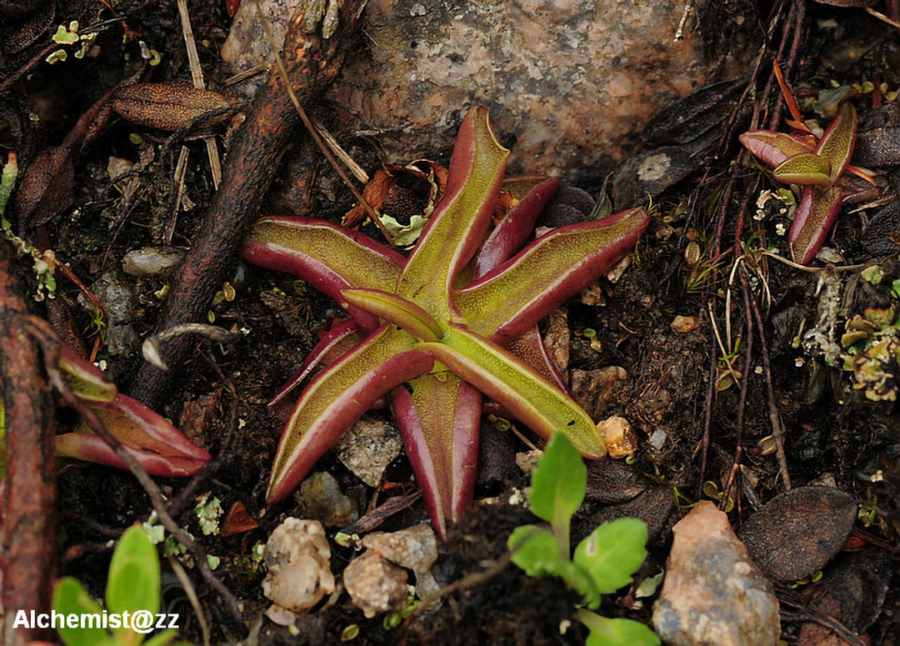高山捕虫堇 Pinguicula alpina
- Scientific Name: Pinguicula alpina L.
- Ref: Sp. Pl.:17. 1753
- English Common Name: alpine butterwort
- Chinese Common Name: 高山捕虫堇 gāoshān bǔchóng∙jǐn
- Family: Lentibulariaceae
- Genus: Pinguicula
- Distribution: Bogs and wet places on mountains; 1800-4500 m. Chongqing, Gansu, NE Guizhou, W Hubei, E Qinghai, S Shaanxi, Sichuan, S and SE Xizang, NW Yunnan [Bhutan, N India, Kashmir, Mongolia, N Myanmar, Nepal, Russia; Europe].
- Photo: 07/21/2011, Mt. Taibai, Qinling
Herbs, perennial, overwintering by a resting bud; bud ovoid, ca. 1 cm. Roots numerous, 0.4-1 mm thick. Leaves shortly petiolate; leaf blade pale green, elliptic-oblong to lanceolate-oblong, 1-4.5 × 0.5-1.7 cm, abaxially glabrous, secondary veins 5-7 on each side of midvein, base broadly cuneate, margin involute, apex obtuse to rounded. Flowers 1-5, from generative (spring) rosette. Pedicel 2.5-13 cm × 0.4-1.2 mm, glabrous, apical part enlarged in fruit. Calyx parted from base into 2 lips, glabrous; lower lip 1-2.5 mm, 2-lobed, lobes obovate; upper lip 2-4 mm, 3-lobed, lobes triangular-ovate. Corolla mostly white with 1 or more yellow spots on palate, 0.9-2 cm; tube shortly funnelform-tubular, 3-7 mm, outside glabrous, inside puberulent; spur yellowish, cylindric, straight, ± as long as corolla tube, apex rounded; lobes of lower lip circular to broadly ovate, apex rounded to obtuse; lobes of upper lip broadly ovate to suborbicular, apex obtuse. Filaments curved, 1.4-1.6 mm; anther thecae confluent. Ovary globose, ca. 1.5 mm in diam.; style short but distinct; stigma lower lip circular and ciliate, upper lip deltoid. Capsule ovoid-oblong, 5-7 mm, glabrous. Seeds narrowly ellipsoid, 0.6-0.8 mm; seed coat with small prominent elongate reticulations. Fl. May-Jul, fr. Jul-Sep. 2n = 32. (Flora of China)

07/26/2012, Mt. Emei, Sichuan
